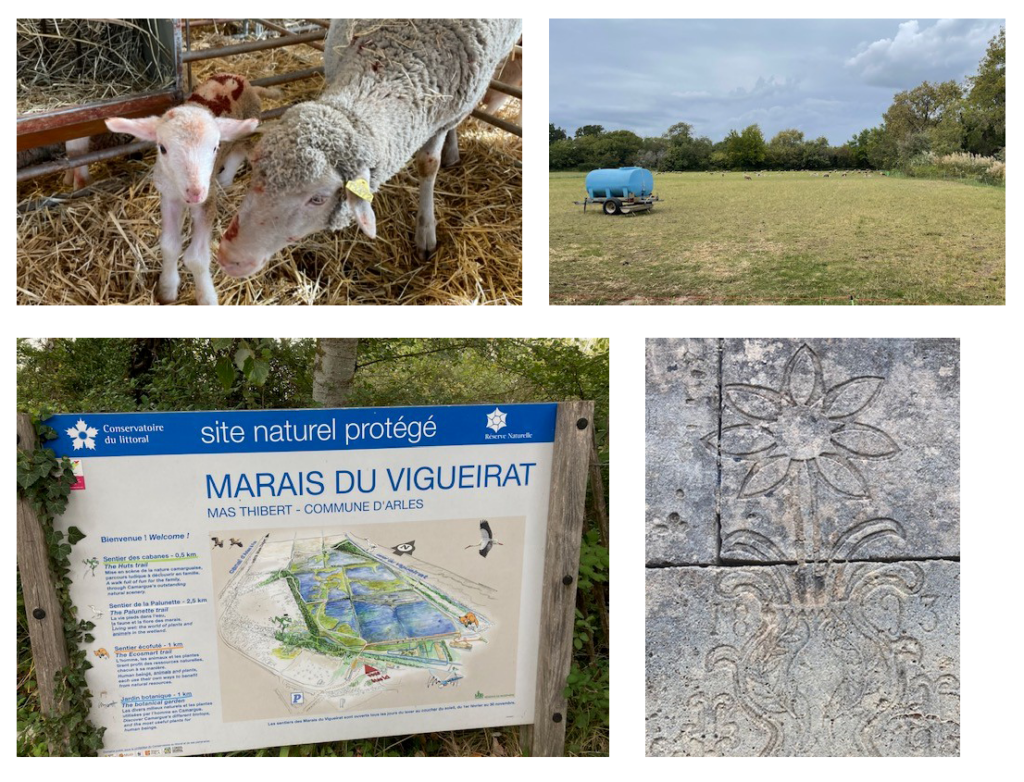
Waters of LIFE Attends European Forum for Nature Conservation and Pastoralism Study Trip
The Waters of LIFE were delighted to be part of a study trip to La Crau in France with the European Forum for Nature Conservation and Pastoralism (EFNCP), looking as some of the ecosystem services provided by farmers and their herds in the area.
Staff from the Waters of LIFE were part of a recent study trip, organised by the European Forum for Nature Conservation and Pastoralism (EFNCP). The trip visited La Crau, an area of southern France, which consists of arid grasslands (called coussouls). The area was formed thousands of years ago when the Durance river changed its course. Farmers in this area still engage in the ancient practice of transhumance, where their sheep herds graze the coussouls in Winter and Spring and then move to Alpine meadows for the dry summer season. This grazing is essential to preserve the habitat for a range of bird species, some of which are found nowhere else in France.
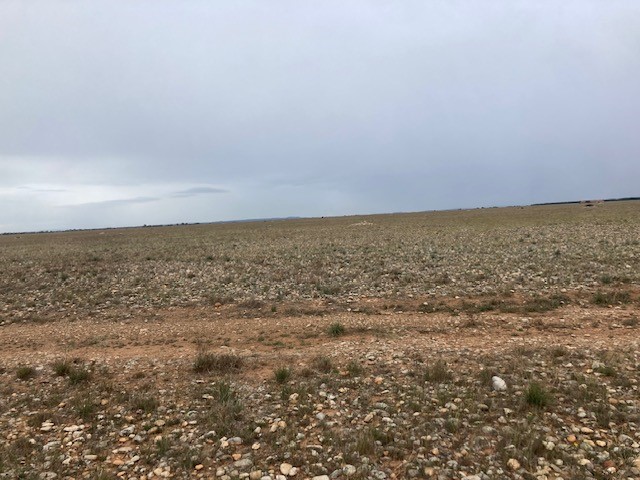
Coussouls: the dry grassland of La Crau, despite its barren appearance in summer, it provides important habitat for rare bird species and, once the autumn rains arrive, it will provide grazing for sheep returning from the Alps. Photo – Anne Goggin (Waters of LIFE)
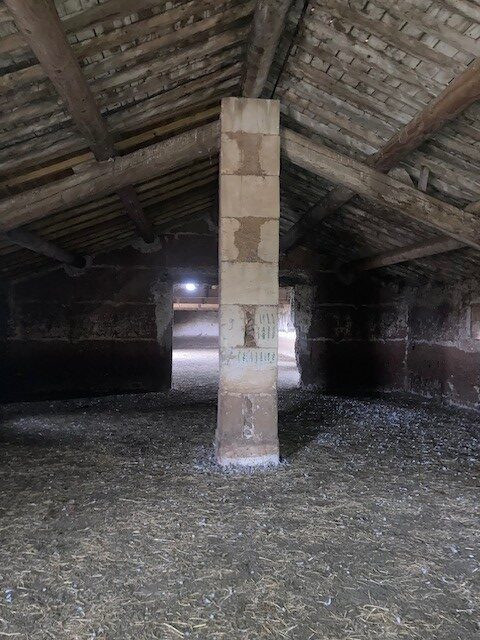
The Interior of one of the many sheep barns on coussouls – ruins of barns dating back to the 1st Century BC are visible in the area. Photo – Anne Goggin (Waters of LIFE)
Parts of this area are irrigated by a series of canals and sluices built in the 16th Century. The canals bring mineral rich melt water from the Alps, which is used to irrigate hay fields. The hay is cut three times a year from May to Oct and the fodder is sold around Europe. It is particularly in demand amongst horse owners because of its quality. In Autumn, the meadows are grazed by sheep returning from the Alps.
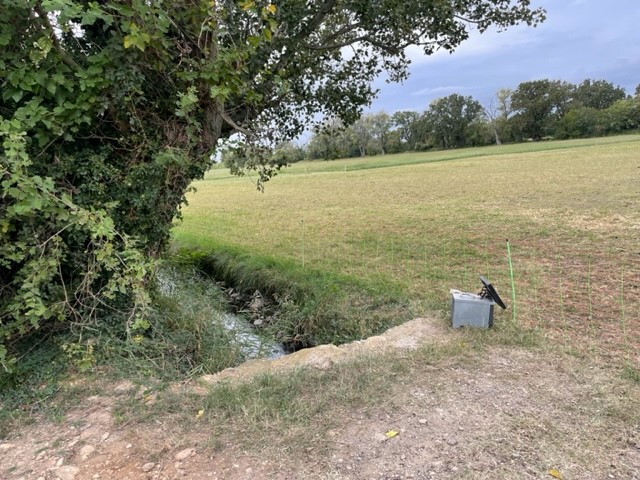
The rich hay meadows of La Crau, are irrigated by a network of canals and sluices during the dry summer months. Photo – Anne Goggin (Waters of LIFE)
The irrigation system consists of flooding the fields to a depth of several centimetres every 10days. A proportion of this irrigation water percolates to ground and provides 70% of the recharges to the underlying aquifer (the remaining 30% coming from rainfall). This, in turn, is used to provide drinking water to the local population along with water for other agricultural activities and industry. This lovely animation shows how the system works, it is in French, but the pictures tell the story very well.
The public body responsible for managing groundwater in the area, SYMCRAU, is currently undertaking a pilot results based agricultural payments scheme, which is rewarding farmers for their contribution to preserving groundwater water quantity and quality, along with biodiversity in LA Crau.
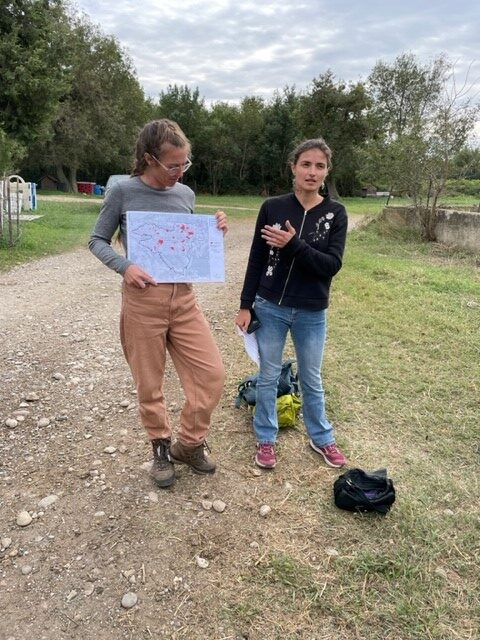
Staff from Symcrau explaining about their pilot results based scheme rewarding farmers for preserving the groundwater quantity and quality. Photo – Anne Goggin (Waters of LIFE)
Ground water from La Crau comes to the surface along its south western edge and creates a marsh area called le Marais de Vigueirat, which is managed as wild life reserve and provides important habitat for wading birds such as flamingos. It also provides grazing for Carmargue horses and the renowned local racing bulls.
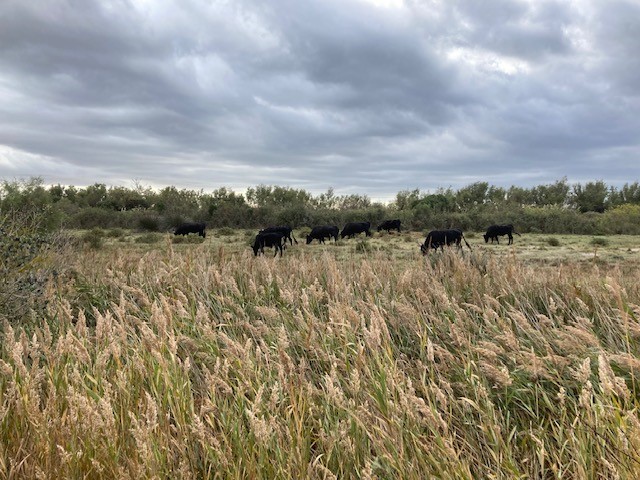
Le Marais de Vigueirat is an important wild life reserve which is fed by groundwater from La Crau. It is grazed by racing bulls as well as Carmargue horses. Photo – Anne Goggin (Waters of LIFE)
We also visited an area of forest in the Alpilles where goat herds are used to control the vegetation on the forest floor to reduce the risk of forest fires. The herd owners are paid for this service by the local public body responsible for fire control.
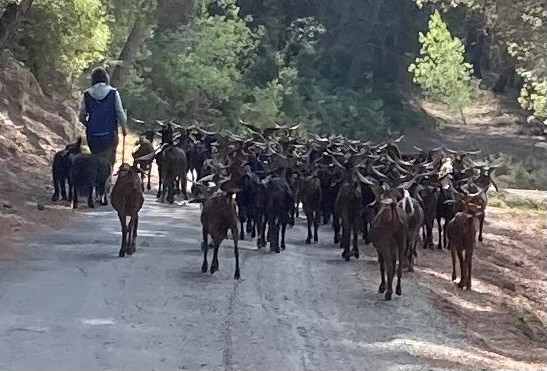
Flock owner Natasha leading her goats to the forest to graze. Photo – Anne Goggin (Waters of LIFE)
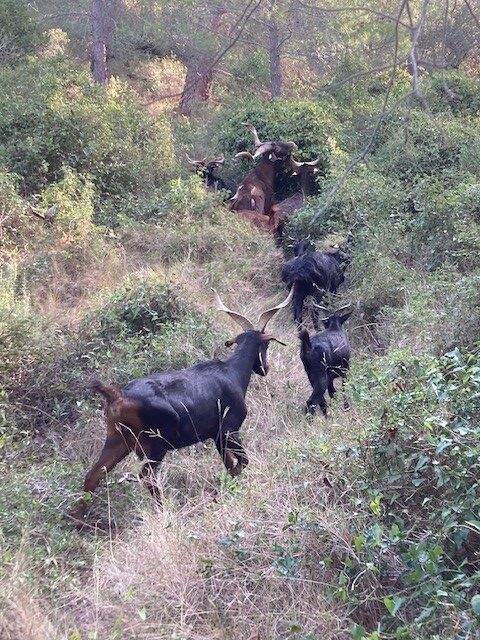
Goats reduce fire risk by grazing on the forest understory. Photo – Anne Goggin (Waters of LIFE)